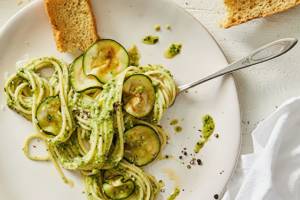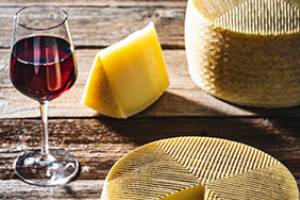
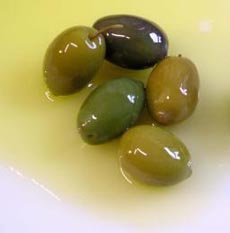
Olive oil is pressed from the fresh-picked fruit of the olive tree. Photo by Iliana | SXC.
November 2005
Updated September 2025
|
 |
Olive Oil & Olives Glossary
Page 9: Terms With S ~ Z
This is Page 9 of the Olive Oil & Olives Glossary. If you think we should consider terms or definitions other than those we have provided, use the Contact Us links on this page. Also read our article, Flavors and Aromas of Olive Oil. Visit our collection of many other food glossaries to learn more about other food products.
You can click on the letter of the alphabet in the bar below to go to
the appropriate glossary section.
a b c d e f g h i j k l m n o p q r s t u v w x y z
This glossary is protected by copyright and cannot be reproduced in whole or in part.
You are welcome to link to it.
SANSA
See pomace oil.
SEVILLANO OLIVE or GORDAL or SPANISH QUEEN
From the area of Sevilla in southern Spain, the Sevillano cultivar is also planted extensively in California. One of the largest green varieties, this olive has a light, fruity flavor. It pairs well with fresh or fresh-style cheeses like goat cheese and feta.
|
|
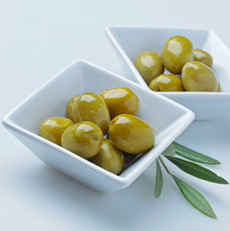
Sevillano olives (photo ©
Dumet).
|
SICILIAN OLIVE
A large green Italian olive from Sicily, often pitted and stuffed with pitted and stuffed with cheese, garlic, a hot chile pepper, or pimento. It is also marinated in olive oil that’s highly seasoned and used as a snack, appetizer, or sandwich topping. There are different varieties of green olives sold as generic “Sicilian” olives.
SINGLE ESTATE OIL
See estate oil.
|
|
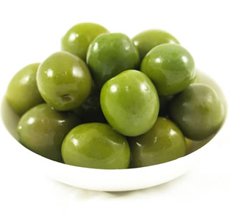
Sicilian green olives (photo ©
Australia On A Plate).
|
SPANISH or SEVILLIAN-STYLE OLIVES
This refers to the processing of the green olives picked from the tree. Olives cannot be eaten straight from the tree and must be processed to leach the oleuropein, which makes them inedible. The olives are treated in a diluted lye solution (sodium hydroxide) to eliminate and transform the oleuropein and sugars. Fermentation is then carried out with the olives covered in brine. Traditionally, this was done in wooden casks; more recently, larger containers of modern materials are used. When properly fermented, olives keep for a long time. Olives can be whole, stoned (pitted), or stuffed with anchovies, pimento, etc. The most commonly used varieties are Manzanillo, Sevillano/Gordal (see above), and Moroccan Picholine.
|
|
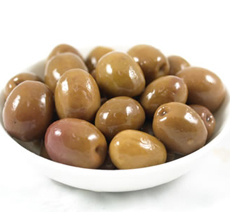
Manzanillo olives (photo ©
Australia On A Plate).
|
SOURI OLIVE
The souri (Arabic for “Syrian”) originated in Lebanon; it is widespread in the Levant— Israel, Jordan, Lebanon, Syria, and the Palestinian territory. It has a high oil yield and exceptionally aromatic flavor.
SPANISH QUEEN OLIVE
See Sevillano olive, above.
SPREMITURA A FREDDO
Italian for cold-pressed.
STONE GROUND
An artisanal technique using a traditional millstone to crush and grind the olives.
|
|
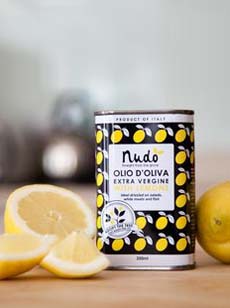
Il Nudo is a modern brand that uses old-fashioned millstones to crush the olives (and also the fruits that flavor some of the oils). Photo © Il Nudo.
|
STABILITY
The degree to which the olive oil retains its freshness, i.e., does not turn rancid. This is a function of the intrinsic composition of the cultivar—the amount of oleic, linolenic, and palmitoleic acids. Of course, keeping the oil tightly capped in a dark, cool space will help, and the ultimate aid is using a wine preservative spray to displace the oxygen in the bottle, thereby slowing oxidation. (But, sprays are expensive, and need to be balanced against the cost of replacing the bottle. If it’s a bottle brought back from Europe that is difficult to obtain, it’s worth it.)
|
|

Photo of Niçoise olives by Nathalie Dulex | SXC.
|
SUBSTITUTING OLIVE OIL FOR BUTTER
As a general rule of thumb, substitute three-quarters of the butter in a recipe with olive oil. In other words: If a baking recipe calls for a stick of butter (8 tablespoons), for example, use 6 tablespoons of olive oil. You can find numerous conversion tables online.
You may prefer an olive oil that has buttery notes because it will then mimic the flavor of the butter that it is replacing. Examples include Arbequina, Coratina, Frantoio, Koroneiki, and Picual. Artisan cold-pressed oils may retain more delicate buttery flavors, while late harvest oils often develop more buttery, mellow characteristics.
TABLE OLIVE
An olive that is grown for eating (“at the table”) as opposed to pressing for oil. These varieties tend to be fleshier, with more fruit surrounding the pit. Some varieties, fleshy and satisfying as table olives, also yield delicious oils and are pressed into artisan oils as well.
UNFILTERED OLIVE OIL
IOOC Definition: Unfiltered oil contains tiny particles of olive flesh, which leave the oil cloudy. Olive oil aficionados claim this adds additional flavor. Unfortunately, it causes a sediment to form at the bottom of the bottle over time, which can become rancid, negatively impacting flavor and shelf life. Unfiltered oil should be carefully stored and used within 3 to 6 months of bottling.
|
|

A mixture of table olives (photo © California Olive Ranch | Facebook).
|
USDA
The U.S. Department of Agriculture. Most countries use the IOOC standards. The U.S. is one of the few major markets that has not adopted the IOOC definitions. Instead, the USDA has a 1948 classification, which uses terms such as “fancy” and “choice.” As of this writing, new standards are being presented for comment and adoption.
|
|

USDA logo. Image courtesy United States Department Of Agriculture.
|
- Virgin Olive Oil: Oil which has a free acidity, expressed as oleic acid, of not more than 2 grams per 100 grams (2.0%) and the other characteristics which correspond to those fixed for this category in this standard. Virgin olive oil represents a very small percentage of production, and is rarely found in the U.S.
- Ordinary Virgin Olive Oil: Virgin olive oil which has a free acidity, expressed as oleic acid, of not more than 3.3 grams per 100 grams and the other characteristics which correspond to those fixed for this category in this standard. Ordinary oil may still be fine for frying or where flavor is not wanted or needed.
- Lampante Virgin Olive Oil: Virgin olive oil not fit for consumption as it is, designated lampante virgin olive oil, is virgin olive oil which has a free acidity, expressed as oleic acid, of more than 3.3 grams per 100 grams and/or the organoleptic characteristics and other characteristics of which correspond to those fixed for this category in this standard. It is intended for refining or for technical use.
As with all olive oils of all grades, the health benefits are the same regardless of quality and cost.
VARIETIES OF OLIVE
See cultivar.
Go To The Article Index Above
TERROIR
Pronounced tur-WAH, the French word for soil, land, or terrain, “terroir” has long been used in wine and coffee analysis to denote the special characteristics of geography that give the grape or bean its individuality: soil, geology, aspect, and altitude. It is an extended meaning of the word for land and can be loosely translated as “a sense of place,” the sum of the effects that the environment has on the creation of what is grown there. The term can also be used to describe olive groves (or cacao beans, or cheese, any other agricultural product where the flavor is significantly impacted by its surroundings), as the same variety of olives grown in the same region can create different-tasting and different-colored oil based on the terroir of the grove. The term is now being used, appropriately, for cacao beans.
|
|
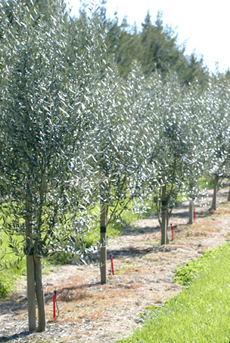
Young olive trees in New Zealand (photo © Village Press).
|
Lifestyle Direct, Inc. All rights reserved. Images are the copyright of their individual owners.

|
